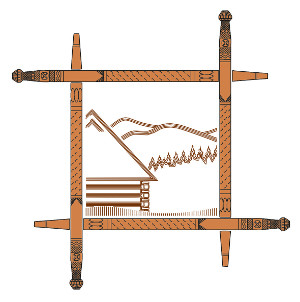The hut was built mostly on logs, made of wooden logs, covered with a gable (sometimes hipped) roof covered with shingles or trusses. The interior could be divided by a wall into two rooms of unequal size. The first focused the life and work of shepherds. A bonfire (watt) was constantly burning in it, above which a cauldron for heating milk hung. There was also a pellet (bunk) for sleeping, shepherd's dishes, a shelf for smoking oscypek (polica), and various everyday items. In the second room, acting as a warehouse, ready dairy products were stored. Receiving huts can be found in all mountain ranges in Lesser Poland: Tatra Mountains, Gorce, Beskid Wyspowy, Mały, Niski, Żywiecki, Sądecki, Makowski and Pieniny. Few are used as intended. Most are undeveloped and are falling into ruin, but there are also those that are being converted by the owners into weekend houses, among others on the southern slopes of Gorce on Nowy Targ in a clearing
Wisielakówka.
Some of the shacks were covered by conservation care provided by state institutions, e.g. Tatra National Park or Gorczański National Park. A large accumulation of several dozen shepherd's huts is located in Jurgów in the Podokólne clearing. In the past, a number of magical practices were associated with the hut. When the shepherd entered the hut for the first time after winter, he secured the four angles with a cross sign. Above the entrance to the hut, the shepherds nailed branches of fir and nine lillies to guard the farm against spells. For the same purpose, the boundaries around the hut in the hall were marked by a shepherd with a knife or dedicated chalk, with which he circled, i.e. he described the shepherd's hut. In the Tatras, in order to avoid a bear visiting the hall, shepherds adhered to the ban on sitting in a hut on the back of the lake - a log supporting a waddle. Word of Wallachian origin (Romanian sălaș "flat, residence").














